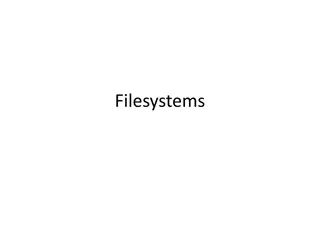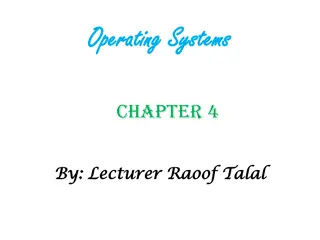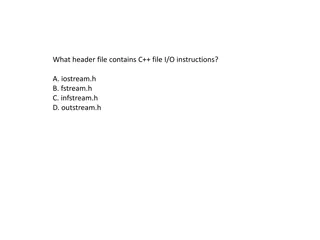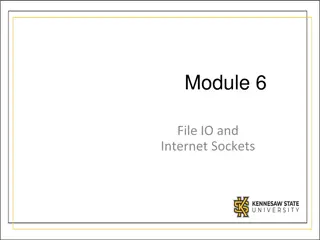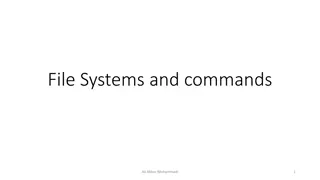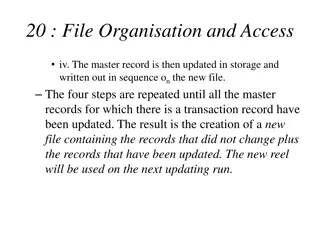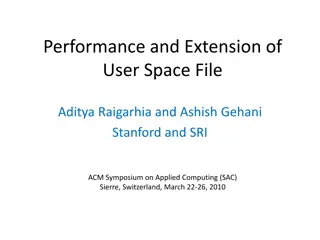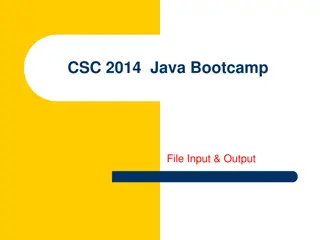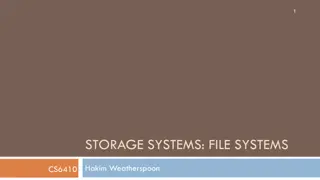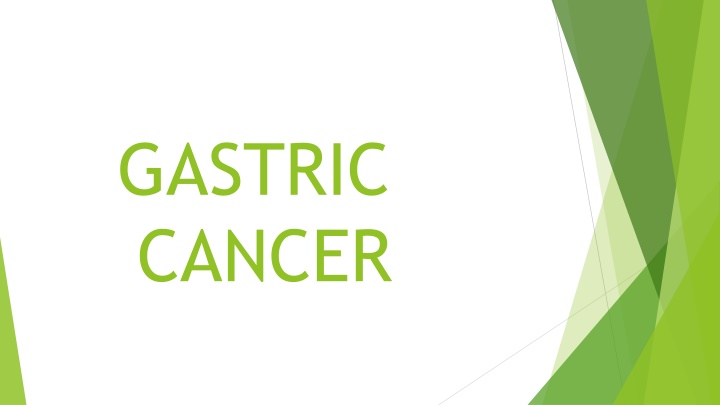
Gastric Cancer: Symptoms, Diagnosis, and Management
Gastric cancer, also known as stomach cancer, originates in the mucus-producing cells of the stomach lining. This type of cancer primarily affects older individuals and is more common in men. Risk factors include gastritis, Helicobacter pylori infection, family history, and lifestyle choices like smoking and alcohol consumption. Symptoms of gastric cancer may include appetite loss, indigestion, vomiting, and weight loss. Diagnosis involves a series of evaluations like endoscopy and imaging tests. Complications can arise, such as hemorrhage and metastasis. Treatment options include chemotherapy, radiation, and surgical interventions such as gastrectomy. Nursing care involves addressing pain, nutritional imbalances, self-esteem issues, and skin integrity concerns.
Download Presentation

Please find below an Image/Link to download the presentation.
The content on the website is provided AS IS for your information and personal use only. It may not be sold, licensed, or shared on other websites without obtaining consent from the author. If you encounter any issues during the download, it is possible that the publisher has removed the file from their server.
You are allowed to download the files provided on this website for personal or commercial use, subject to the condition that they are used lawfully. All files are the property of their respective owners.
The content on the website is provided AS IS for your information and personal use only. It may not be sold, licensed, or shared on other websites without obtaining consent from the author.
E N D
Presentation Transcript
GASTRIC CANCER
DEFINITION CANCER THAT BEGINS IN THE MUCUS PRODUCING CELL ON THE INSIDE LINING OF THE STOMACH. (ADENOCARCINOMA). ALSO CALLED AS STOMACH CANCER.
INCIDENCE INCIDENCE INCREASE WITH AGE. MORE COMMON IN MEN.
RISK FACTOR GASTRITIS HELICOBACTER PYLORI INFECTION (BACTERIA) GASTRIC ULCER FAMILY HISTORY CERTAIN HEALTH CONDITION .CHRONIC INFLAMMATION LIFE STYLE FACTORS.. SMOKING ALCOHOL LESS INTAKE OF FRUITS AND VEGETABLES. EXCESSIVE INTAKE OF SPICY FOODS.
CLINICAL MANIFESTATION PROGRESSIVE LOSS OF APPETITE. GASTRIC FULLNESS. INDIGESTION MALENA VOMITING MILD NAUSEA HEART BURN PAIN
CONT.. DISCOMFORT IN UPPER OR MIDDLE PART OF ABDOMEN. WEIGHT LOSS. PAIN AFTER EATING. WEAKNESS OR FATIGUE ASSOCIATED WITH MILD ANAEMIA.
DIAGNOSTIC EVALUATION HISTORY COLLECTION. PHYSICAL EXAMINATION. ENDOSCOPY CYTOLOGY EXAMINATION CT SCAN BARIUM X-RAY UPPER GI RADIOGRAPHY ULTRASOUND
COMPLICATION HAEMORRHAGE METASTASIS AND DEATH DUMPING SYNDROME (SYMPTOMS ARISING AFTER OPERTAION)
MANAGEMENT CHEMOTHERAPY FOR FURTHER DISEASE CONTROL, OR FOR PALLIATION. RADIATION FOR PALLIATION.
SURGICAL MANAGEMENT SUBTOTAL GASTRECTOMY- SURGEON REMOVE PART OF THE STOMACH TOTAL GASTRECTOMY- REMOVAL OF WHOLE STOMACH OESOPHAGOGASTRECTOMY- REMOVAL OF STOMACH AND PART OF FOOD PIPE.
NURSING DIAGNOSIS PAIN RELATED TO THE DISEASE PROCESS OR SURGERY AS EVIDENCED BY FACIAL EXPRESSION. IMBALANCED NUTRITIONAL STATUS LESS THAN BODY REQUIREMENT RELATED TO THE MALIGNANCY AND TREATMENT AS EVIDENCED BY WEAKNESS. SITUATIONAL LOW SELF ESTEEM RELATED TO WEIGHT LOSS AS EVIDENCED BYPATIENT VERBALIZATION . RISK FOR IMPAIRED SKIN INTEGRITY RELATED TO EFFECTS OF RADIATION OR CHEMOTHERAPY AS EVIDENCED BY SKIN RASHES. DEFICIENT KNOWLEDGE RELATED TO DISEASE CONDITION AS EVIDENCED BY ASKING MORE DOUBTS BY THE PATIENT.



